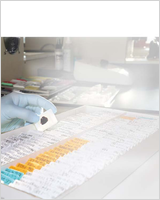From: SECTION 3., Recommendations for biobanks

NCBI Bookshelf. A service of the National Library of Medicine, National Institutes of Health.
Categorize the stored samples in order of priority, to facilitate the relocation process if the samples or equipment need to be moved to an external facility in case of an emergency.
Calculate the acceptable downtime and the response times in the event of a disaster.
Carry out a risk analysis to evaluate the potential disasters and the acceptable loss.
List the actions for each evaluated event, and design SOPs as part of the QMS, along with adequate simulation exercises, training, and review.
Prepare an on-call list of people on standby in case of an emergency.
Ensure that adequate backup storage capacity is available, in case samples need to be transferred.
From: SECTION 3., Recommendations for biobanks

NCBI Bookshelf. A service of the National Library of Medicine, National Institutes of Health.